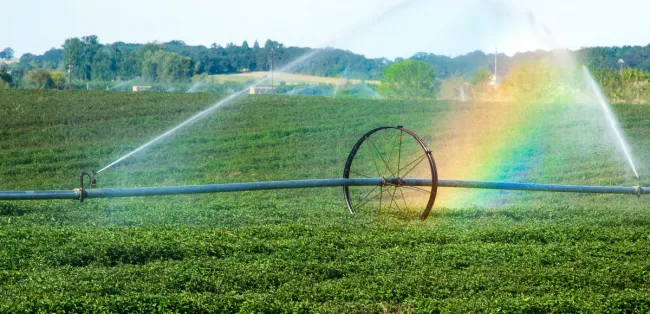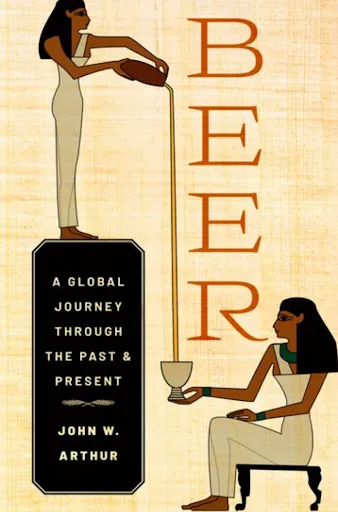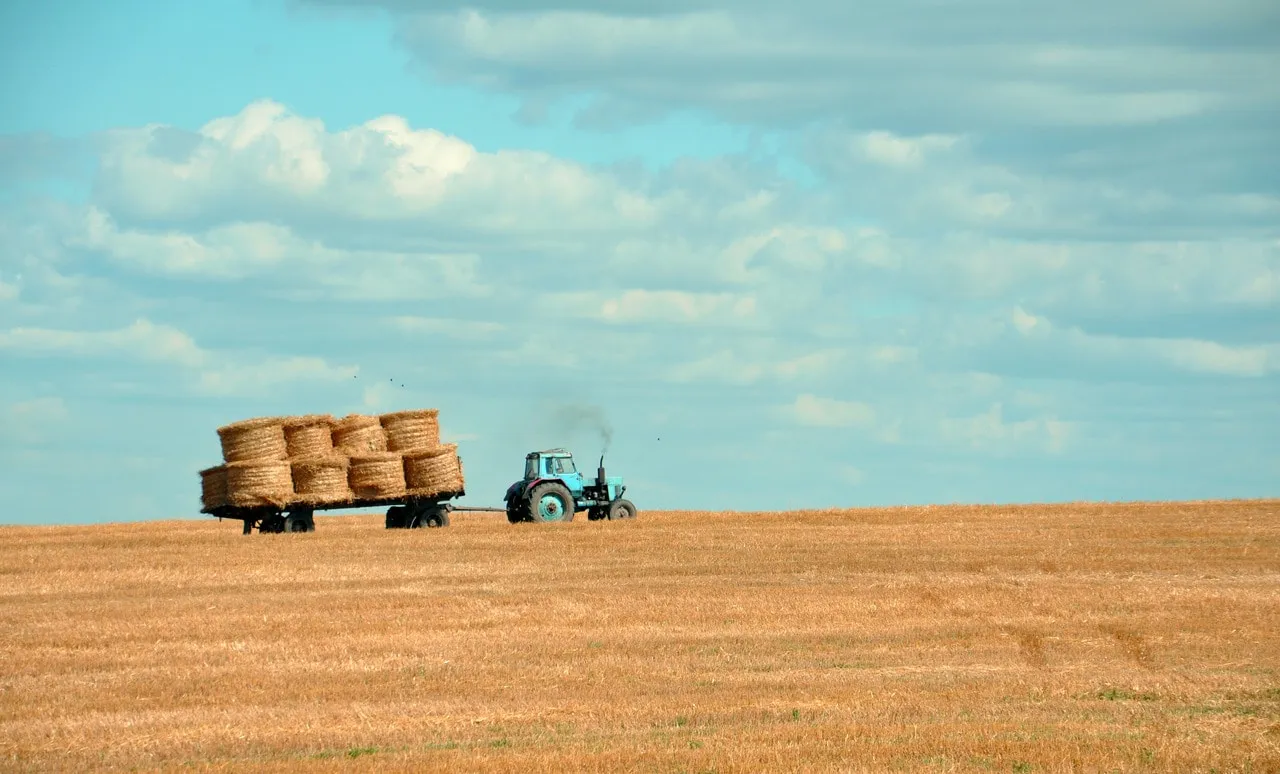This paper assesses the agricultural water use efficiency of different food types based on their nutrient content, instead of the conventional approach of assessing water use in terms of litres used to produce a certain weight of food. The purpose of the study is to determine whether higher intakes of nutrient-rich foods such as fruit, vegetables and seeds might conflict with the aim of minimising agriculture’s water use.

The study used nutrient content scores (NCS) to quantify the mineral and vitamin content of the main food groups. NCS are defined (per gram of food weight) as the sum of the percentage of the recommended daily allowances for each mineral and vitamin present. The diagram below shows NCS for each food group, with the stacked coloured bars representing mineral and vitamin content and the underlying grey bars representing calorie content from fat, carbohydrates and protein. Organ meats, for example, have a high mineral and vitamin content compared to their calorie content, while sugar has high calorie content compared to its mineral and vitamin content.
 Image: Figure 1, Damerau et al. Nutrient content scores for 24 food groups. NCS are based on food weight and displayed per gram net weight. Foods are ranked according to their overall score on the right y axis from highest (left) to lowest (right). The stacked bars show specific nutrient content shares as a percentage of the respective RDA, which when added up, amount to each food’s specific NCS. Certain animal foods, legumes, vegetables, nuts and seeds show the highest nutrient concentrations of 22 essential minerals and vitamins; sugar and fats rank lowest. The underlying light grey bars relate the NCS to its respective overall caloric load and protein content per gram of food (left y axis), with animal products showing the highest protein shares within the overall caloric load.
Image: Figure 1, Damerau et al. Nutrient content scores for 24 food groups. NCS are based on food weight and displayed per gram net weight. Foods are ranked according to their overall score on the right y axis from highest (left) to lowest (right). The stacked bars show specific nutrient content shares as a percentage of the respective RDA, which when added up, amount to each food’s specific NCS. Certain animal foods, legumes, vegetables, nuts and seeds show the highest nutrient concentrations of 22 essential minerals and vitamins; sugar and fats rank lowest. The underlying light grey bars relate the NCS to its respective overall caloric load and protein content per gram of food (left y axis), with animal products showing the highest protein shares within the overall caloric load.
Next, the study combined the data from the figure above with global average blue and green freshwater use data for each food type, sourced from the Water Footprint Network. The figure below shows nutrient content scores per litre of water use (green plus blue). The dark outlines in the background of each stacked bar show the percentage of water consumption that is blue water (for example, 24% of vegetable water use is blue water, as is 15% of fruit water use). Vegetables and starchy roots show the highest efficiency in terms of vitamin and mineral content provided per litre of water use. Sugar and fats (of both animal and plant origin) rank low in terms of vitamins and minerals provided per litre of water use.
 Image: Figure 2, Damerau et al. Global average water-use efficiency per litre net water use. The stacked bars show the added amounts of 22 essential micronutrients as a percentage of the respective RDA (NCS) per litre overall net water use (green and blue water). The underlying dark outlined bars depict the relative amount of water required for irrigation and processing (blue water) as a percentage of the total water use of 1 l for each food group.
Image: Figure 2, Damerau et al. Global average water-use efficiency per litre net water use. The stacked bars show the added amounts of 22 essential micronutrients as a percentage of the respective RDA (NCS) per litre overall net water use (green and blue water). The underlying dark outlined bars depict the relative amount of water required for irrigation and processing (blue water) as a percentage of the total water use of 1 l for each food group.
The authors note that these findings will be most important in areas where there is local water stress, since in areas of plentiful water, producing crops that require a high level of water will not cause environmental stress in terms of water use.
The paper also calculates water use and micronutrient content per gram of protein for several protein sources. It finds that the protein sources using the most water per gram of protein are beef (48 l/g), mutton and goat (30 l/g) and beans (26 l/g), while the sources using the least water per gram of protein are soybeans (l/g), peas (13 l/g) and chicken (14 l/g). Figure 3 of the paper shows the proportion of water use that is blue and green for each protein source.
Abstract
When distributed equally, the total amount of food produced worldwide could sufficiently meet current global demand. Still, malnutrition in the form of nutrient deficiencies continues to prevail in both low- and high-income countries. At the same time, natural resource use for agriculture is reaching or exceeding environmental boundaries. By integrating a comprehensive micronutrient scoring method with data on agricultural water demand, this analysis aims to re-evaluate the global water-use efficiency of dietary nutrient production. A stronger reliance on more nutrient-dense foods could lead to higher water-use efficiencies, though dietary water footprints were likely to increase overall. With a more detailed focus on plant and animal foods, we find that most dietary protein sources show comparable water-use efficiencies, and thus can be drivers for agricultural water demand. Animal foods, besides having a unique nutrient profile, often do not compete directly with crops for the same water resources. However, a significant reduction in the demand for utilisable freshwater resources could be achieved by reducing the amount of feed crops in ruminant diets.
Reference
Damerau, K., Waha, K. and Herrero, M., 2019. The impact of nutrient-rich food choices on agricultural water-use efficiency. Nature Sustainability, p.1.
Read the full paper here. See also the Foodsource resource How do food systems affect water use?




Comments (0)